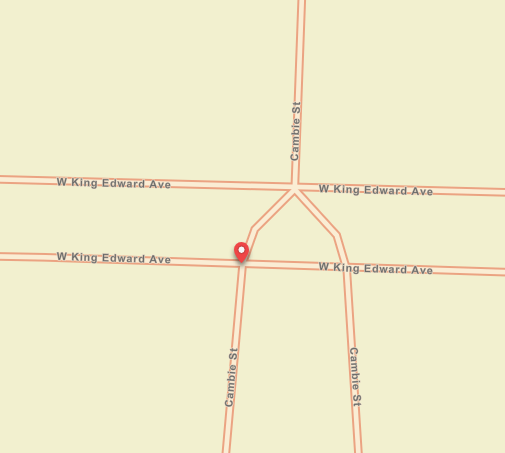In many geocoding applications, the location of a place is not given as a number and street name but as the intersection of two streets. An intersection search consists of the intersecting street names and additional identifying information, such as the city, postal code, or both. An intersection address requires the name of the first street and an intersection connector, followed by the name of the second street you want to find. The default intersection connectors for all countries are &, @, |, and \\, but each country can potentially have additional connectors, such as and and at in the United States or France. For example, Redlands Blvd and New York St 92373 is a valid intersection search, as is Redlands Blvd & New York St Redlands Ca. For street intersection matches, StreetInt is the value that is returned in the Addr_type output field.
Several types of intersections can found with the locators based on the Street Address role created by the Create Locator geoprocessing tool, as described below.
Physically connected intersections
A typical intersection is formed when two street segments physically cross each other. An example of this is W Park Ave and Tennessee St, Redlands, CA.
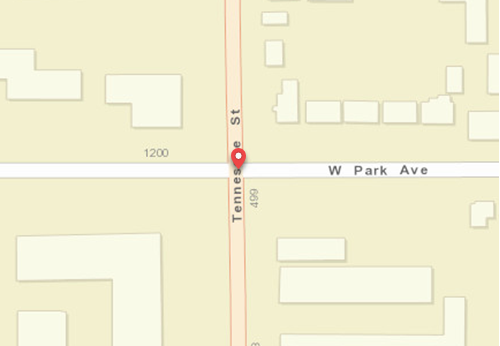
Intersections not physically connected
You can find intersections between streets that are not physically connected. This includes cases where streets are separated by elevation, such as a highway overpass crossing over another street. An example of this type of intersection is Pacific Hwy and W Washington St, San Diego, CA 92140.
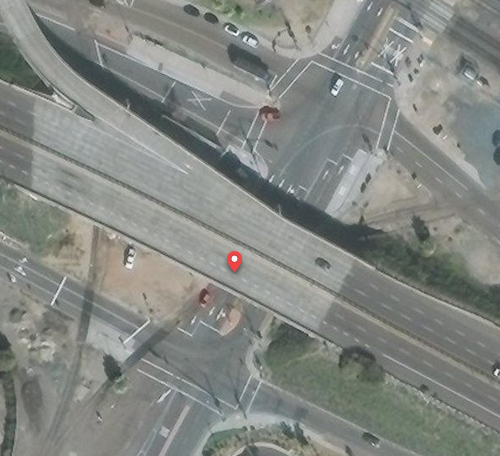
Disconnected intersections
An intersection can also be formed by two disconnected streets when one street ends within a certain distance, defined as a distance tolerance, of another but they are not physically connected. Intersection candidates matched to physically connected intersections and those matched to disconnected intersections are not scored differently. Two types of disconnected intersections are described below.
Near intersections
A near intersection can consist of one point where both streets have the smallest distance between one another, such as a dead end or cul-de-sac, or parallel streets that have multiple points with minimum distances between the disconnected streets. The distance tolerance for a near type intersection is 60 meters. A near type intersection is not returned when at least one physically connected intersection is returned. If no physically connected intersection is returned and the streets are separated by a distance within the tolerance, a near type intersection result is returned. An example of a near type intersection search is Rua Ferdinando Ferreira @ Avenida Comendador Franco, Curitiba, BRA.
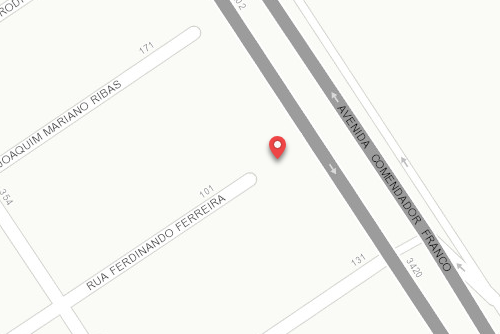
Roundabouts
Another type of disconnected intersection that is supported is a roundabout. A roundabout is formed when two or more streets connect to a circular roadway, which is often unnamed. The participating streets typically don't connect directly to each other, but when you search for them and they are within the distance tolerance, an intersection match is returned by the locator. An example of a roundabout intersection search is Rue Jean Laurent & Avenue Jean Mermoz, Le Vésinet, FRA.
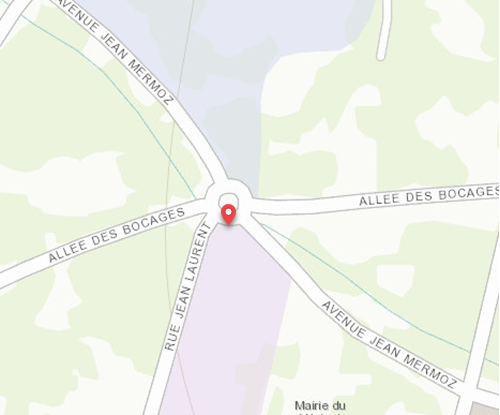
Ambiguous intersections
Sometimes there are multiple possible matches for an intersection search. This typically occurs when divided roads cross each other. A divided road consists of two street segments separated by a median. In this scenario, there can be up to four equivalent intersection matches consisting of the same street names at different locations. The locator uses an ambiguous intersection tolerance with such searches to remove redundant intersection candidates from the results. The default ambiguous intersection tolerance is 30 meters. Specifically, if there are multiple intersection candidates with the same street names and different locations, and if they are within 30 meters of each other, the locator returns only one of the candidates. An example of an ambiguous intersection search is Cambie St and W King Edward Ave, Vancouver, British Columbia. In this case, there are three potential intersection candidates with the same street names. Because the locations are within the ambiguous intersection tolerance, only one intersection candidate is returned.
